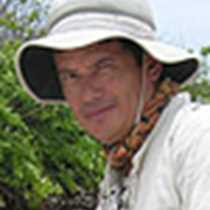Isabela & Fernandina Islands
It is incredible how different the islands in Galapagos are, each one with its own attraction and something special that overtakes our imagination. Only a few hours ago we left Santa Cruz and today early in the morning we woke up with a panoramic view of the Ecuador volcano, just before crossing the Equator line. The landscape is magnificent and it is very easy to take notice of the huge explosion that occurred during the eruption that destroyed this volcano forever.
After breakfast we headed to Punta Vicente Roca, but this time we didn’t land; instead, with the dinghies, we began a beautiful ride along Isabela’s coast line, observing the rest of the collapsed volcano and its different colors of lava resulting from different eruptions occurring in different times.
On the rocks a group of flightless cormorants worked actively collecting seaweed to make their nests, and beside of them a flock of penguins observed us quietly, posing as if knowing they are beautiful. We were looking for mola molas (Oceanic sunfish) when Gilda, one of our naturalists, told us by radio she had seen an osprey (also known as the fish eagle). Of course this sight was a surprise because the last one was seen many years ago.
In the afternoon, we landed at Fernandina Island, the place where the last eruption occurred in the Galápagos. It was not possible to disembark on the small dock because since the uplifted occurred in 1975, the small inlet we have to cross with the dinghies remains completely empty during the low tides.
Inland, we observed a hoard of iguanas facing to the sun as if to worship it. Our guests had to be very careful with their steps in order to not step on the iguana’s bodies. We crossed the iguana’s territory and headed to the black sand beach where we found a group of sea lions. The most attractive was a big male who was barking and barking sonorously without stopping, ordering his females to move to the upper part of the beach. In this case we also had to obey because he looked very aggressive.
We walked up to the other side of the bay, and observed as little by little the sun was disappearing and magically the landscape changed color. The volcano of Fernandina, the mangroves, the water and the shells of sea turtles that were resting in the water acquired a beautiful orange color, as if telling us was time to come back to the National Geographic Islander.
We walked back, a little bit exhausted, hearing at the distance that crazy and tireless sea lion, that – after two hours – still was barking.




